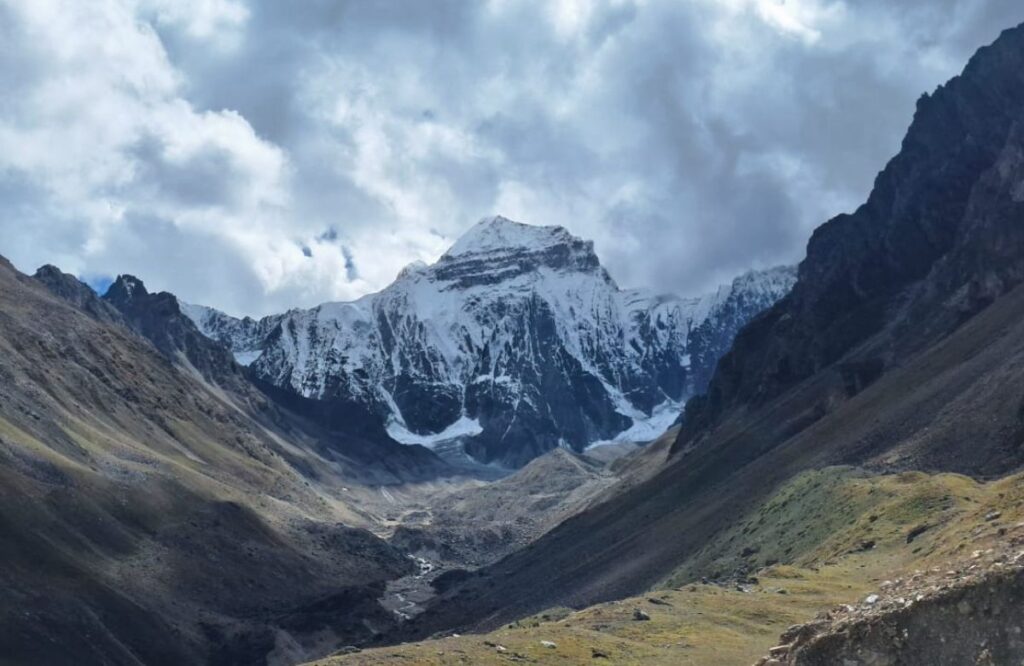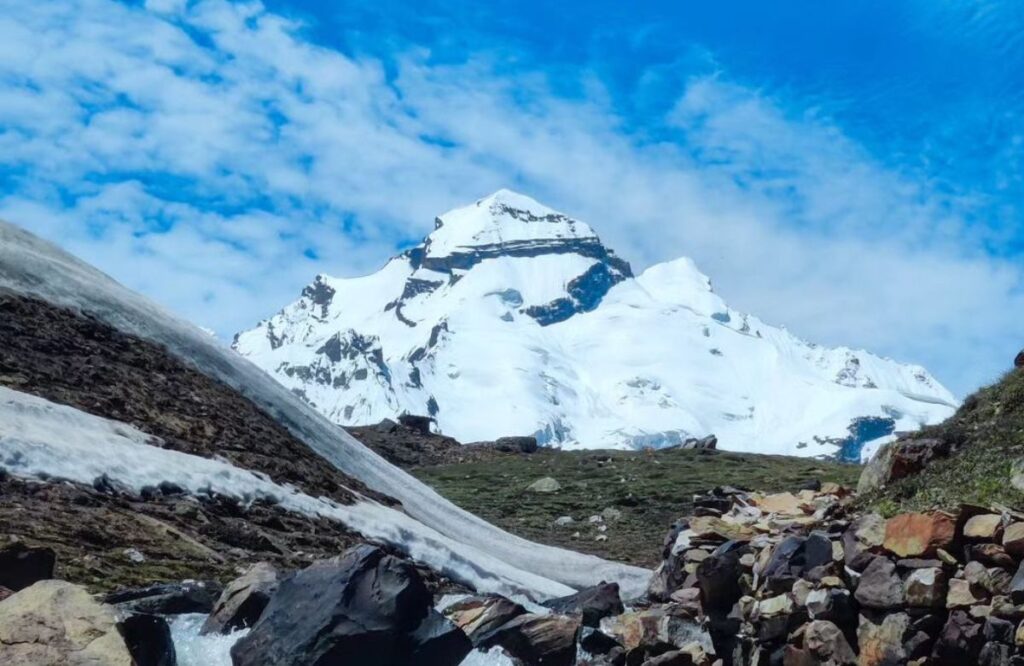Adi Kailash, revered as one among the sacred ‘Panch Kailash‘ or Five Kailash peaks, holds profound spiritual significance in Hindu mythology, drawing pilgrims seeking divine blessings amidst the majestic Himalayan panorama.
Pilgrims and adventure seekers alike are drawn to this mystical destination, not only for its spiritual significance but also for the awe-inspiring landscapes that change with the seasons. Understanding the Adi Kailash weather and temperature fluctuations is crucial for those planning a journey to this divine destination.
Seasonal Overview for Adi Kailash
Summer (May to June)
During the summer months, Adi Kailash experiences a relatively mild and pleasant climate. Daytime temperatures in May and June month range from 10 to 20 degrees Celsius, offering comfortable conditions for trekking and exploration. The snow begins to melt, revealing vibrant alpine meadows and blooming flowers, creating a picturesque backdrop for pilgrims and nature enthusiasts.
Monsoon (July to September)
The monsoon season in July and August brings increased rainfall to the region, transforming the landscape into a lush, green paradise. While the rainfall may add to the natural beauty, it also poses challenges for trekking due to slippery trails. Daytime temperatures range between 10 and 15 degrees Celsius, making it a cooler and refreshing experience.
Autumn (October to November)
Autumn heralds crisp and clear weather, with daytime temperatures ranging from 5 to 15 degrees Celsius. This season is considered one of the best times to visit Adi Kailash as the skies are generally clear, providing breathtaking views of the surrounding peaks. The air is crisp, and the landscapes are adorned with vibrant autumn hues, creating a magical ambiance for pilgrims.
Winter (December to April)
Winter blankets Adi Kailash in a snowy embrace, transforming the region into a winter wonderland. Daytime temperatures can plummet to sub-zero levels, ranging from -5 to 5 degrees Celsius. Snowfall is frequent, and trekking during this season is challenging. Only experienced trekkers and adventurers with proper equipment and preparation should attempt the journey in winter.
Preparing for Adi Kailash Weather
- Layered Clothing: Given the varying temperatures, it’s essential to pack layers, including warm clothing for colder days and lighter options for milder weather.
- Rain Gear: During the monsoon season, waterproof gear, including jackets and trekking boots, is crucial to navigate the wet trails.
- Sun Protection: Regardless of the season, the high-altitude sunlight can be intense. Sunscreen, sunglasses, and a hat are essential to protect against UV rays.
- Winter Essentials: If planning a winter visit, be prepared for extreme cold. Insulated clothing, waterproof boots, and proper gear for sub-zero temperatures are mandatory.
Conclusion
Adi Kailash’s weather and temperature fluctuations add to the allure of this sacred destination, inviting pilgrims and adventurers to experience the beauty of nature in all its forms.
Whether under the warm rays of summer, the refreshing monsoon showers, the crisp autumn breeze, or the snow-covered landscapes of winter, Adi Kailash offers a unique and spiritually enriching journey.
Understanding and preparing for these weather dynamics are crucial for a safe and fulfilling pilgrimage to this celestial abode in the heart of the Himalayas.


